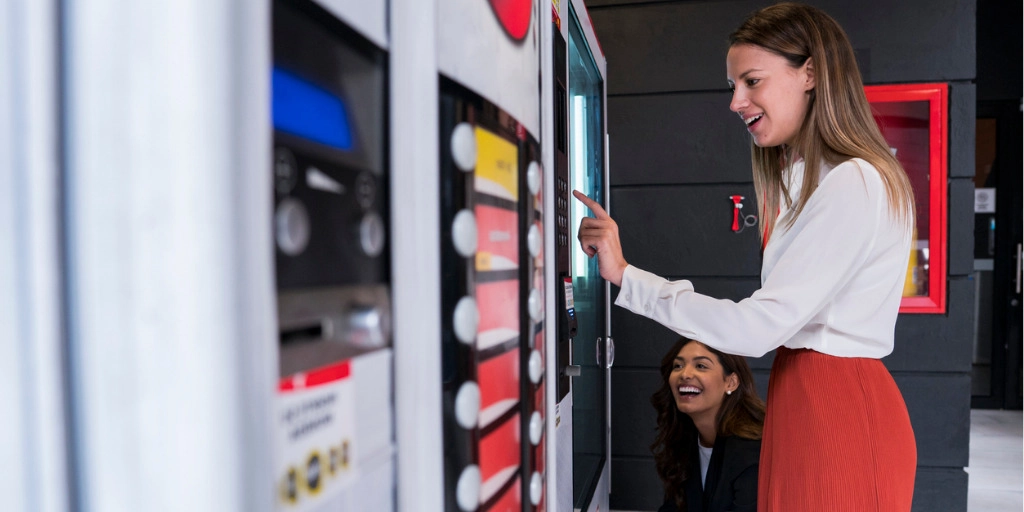Unlocking Passive Income: A Beginner’s Guide to the Vending Machine Business
In the search for a flexible and scalable business model, the vending machine business often flies under the radar. Seen by some as a relic of the past, this industry is, in fact, a modern and lucrative avenue for entrepreneurs seeking to generate passive income. While it requires an initial investment and hands-on work, a well-managed vending machine route can provide a steady, consistent cash flow with a level of flexibility that traditional businesses often lack. This article will provide a comprehensive guide to starting and succeeding in the vending machine business, from the initial setup to scaling your operation. We’ll cover key strategies, common pitfalls, and the surprising potential of this often-overlooked market.

The Low-Barrier-to-Entry Business Model
One of the most appealing aspects of a vending machine business is its accessibility. You don’t need a specialized degree or a massive amount of capital to get started.
1. The Initial Investment
The startup costs for a vending machine business are relatively low compared to many other ventures. A used vending machine can cost anywhere from a few hundred to a couple of thousand dollars, while a new, state-of-the-art machine might run you over $5,000. Your primary expenses will be the machine itself, the initial inventory, and a vehicle to transport and service the machines. This modest entry point makes it an ideal side hustle or a full-time business for those with limited startup capital.
2. Flexibility and Scalability
A vending machine business is inherently flexible. You can start with a single machine in a high-traffic location and manage it in your spare time. As you gain experience and profit, you can gradually expand your route by adding more machines. Unlike a retail store that requires you to be physically present for long hours, a vending machine only needs to be serviced every few days or weeks, giving you the freedom to set your own schedule.
Key Strategies for Success
Simply buying a vending machine and placing it somewhere isn’t enough. Success in this business hinges on strategic planning and smart management.
1. Location, Location, Location
This is the single most important factor in a vending machine’s profitability. A machine full of inventory in a low-traffic area will generate little to no income. Look for locations with a captive audience and high foot traffic.
- High-Traffic Areas: Office buildings, schools, hospitals, and community centers are often excellent choices. People in these locations are likely to be looking for a quick snack or drink.
- Negotiate a Fair Deal: When approaching a business owner about a location, be prepared to offer a commission, typically a small percentage of your sales. This creates a mutually beneficial partnership and incentivizes the owner to keep the location safe and welcoming.
2. The Right Machine and the Right Inventory
Your machine choice and the products you sell should be tailored to your location.
- Machine Type: For a small office, a snack and soda combo machine might be perfect. For a gym, a machine that sells protein bars and bottled water would be more profitable. Modern machines with credit card readers and mobile payment options (like Apple Pay) are a must, as they can significantly increase sales.
- Product Selection: The products you stock should reflect the needs and preferences of your audience. Pay attention to what sells and what doesn’t. Use your sales data to make informed decisions. A study by a leading vending machine supplier found that tailoring inventory to location can increase revenue by up to 30%. For example, an urban office building might see more sales of healthy snacks and coffee, while a factory might have higher demand for soda and candy.
The Practicalities of Running the Business
Once you have a machine and a location, the real work begins. Managing your route efficiently is crucial for maximizing profit and minimizing effort.
1. Regular Servicing and Maintenance
Your machines need to be serviced regularly. This involves refilling inventory, collecting cash, and performing basic maintenance. A neglected machine can lead to lost sales and unhappy customers. Modern vending machines often come with telemetry that can alert you when a machine is running low on a particular product, allowing for more efficient service runs.
2. Financial Management and Record Keeping
Keep meticulous records of your income and expenses. Track your sales, the cost of your inventory, and any commissions paid. This data is essential for understanding your profitability on a per-machine basis and for making smart decisions about your route. Use a simple spreadsheet or a dedicated vending management app to stay organized.
Scaling Your Operation: From Side Hustle to Full-Time Business
The beauty of the vending machine business is its scalability. Once you have a profitable machine, you can reinvest your earnings to buy another, and then another.
- Reinvest Your Profits: Use the money you earn from your first machine to purchase a second one. This “snowball effect” is how many successful vending businesses are built.
- Hiring Help: As your route grows, you may need to hire an employee to help with servicing and maintenance. This is the ultimate step toward creating truly passive income. A manager or technician can handle the day-to-day operations, allowing you to focus on finding new locations and expanding your business.
- Exploring Niche Markets: Consider specializing in a niche market, such as healthy food machines for schools, coffee and beverage machines for corporate offices, or even personal protective equipment (PPE) vending machines for industrial sites. These niche markets often have less competition and higher profit margins.
In conclusion, the vending machine business is a powerful and accessible path to entrepreneurship. While it requires dedication and smart decision-making, it offers a level of flexibility and scalability that is hard to find elsewhere. By focusing on the right locations, tailoring your inventory, and managing your route efficiently, you can build a reliable source of passive income and create a business that works for you.






